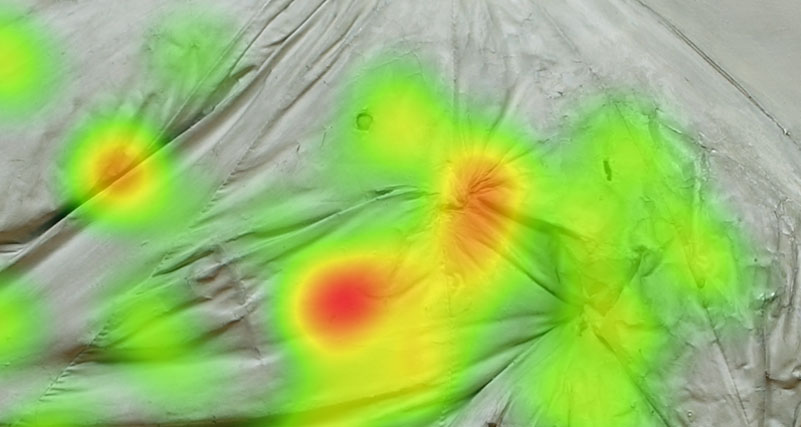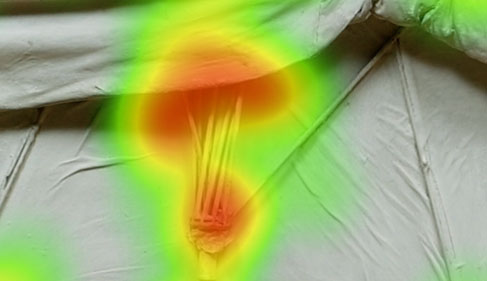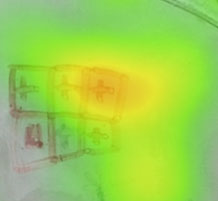
1970, oil on board, cotton wool, umbrella, 121 cm x 111 cm,
average looking time: 18,24 sec.
Create appearances of normality, blow them up, make them a colossal fiction and fascinating illusion, to such an extent when you lose sight of the real sense, and work of art is not a product anymore.
T. Kantor
Tadeusz Kantor is an iconic figure in European culture; he was a well-known painter, screenwriter, stage designer, writer, and happening artist. Kantor was born in 1915 in Wielopole Skrzyńskie, died in 1990 in Kraków. While he’s a legend today, he was an institution during his lifetime. He graduated from the Academy of Fine Arts in Kraków in 1939 under the direction of Karol Frycz. Kantor was an enormously prolific artist. He created tens of paintings, wrote several volumes of reflections on art, finally he founded a theatre, famous all over Europe, which constituted an international model for many years. For the purpose of our guide, let’s focus on his paintings.
After the war, he created figurative compositions of clear texture. Then, he became fascinated with taschism; he used to say that he painted his inner “excretions”. The 60s. were the time of rapid development of the forms he is most famous for, that is: assemblage and emballage. His later artistic work was mainly connected with theatrical activity.
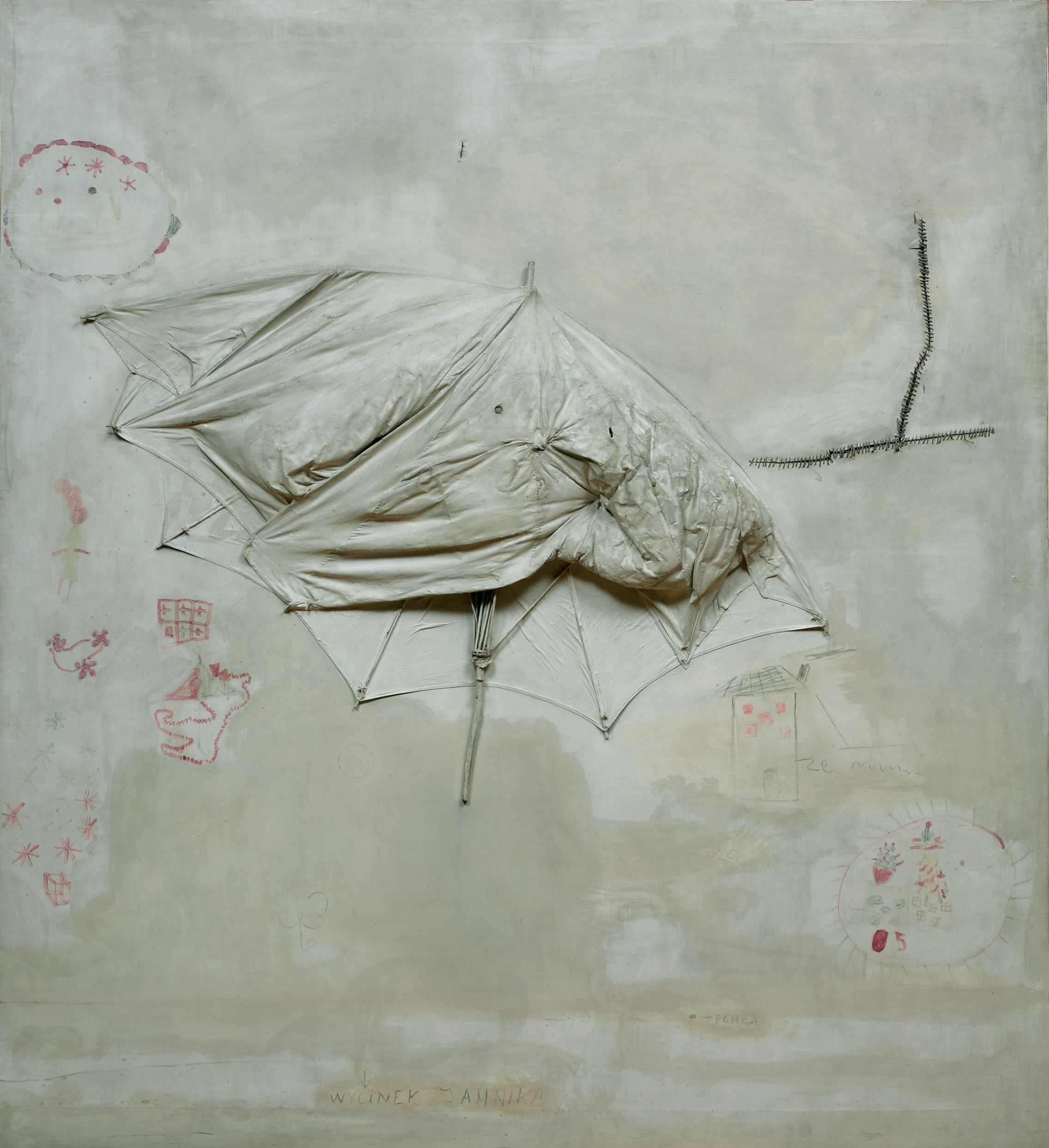
The project titled “Multipart” was designed as an artistic provocation, aimed at questioning the notion of the work of art. Kantor decided to reverse traditional relation between artist, viewer and art institution. In 1970 he informed about selling white canvas at the production cost, with broken umbrellas attached to their surface. The potential buyer had to interfere in the work – everything was allowed. Secondly, the artworks had to be delivered to Foksal Gallery after 6 months. During “Multipart” exhibition, Kantor had the right to comment the progress and sign his name to selected works of his choice.
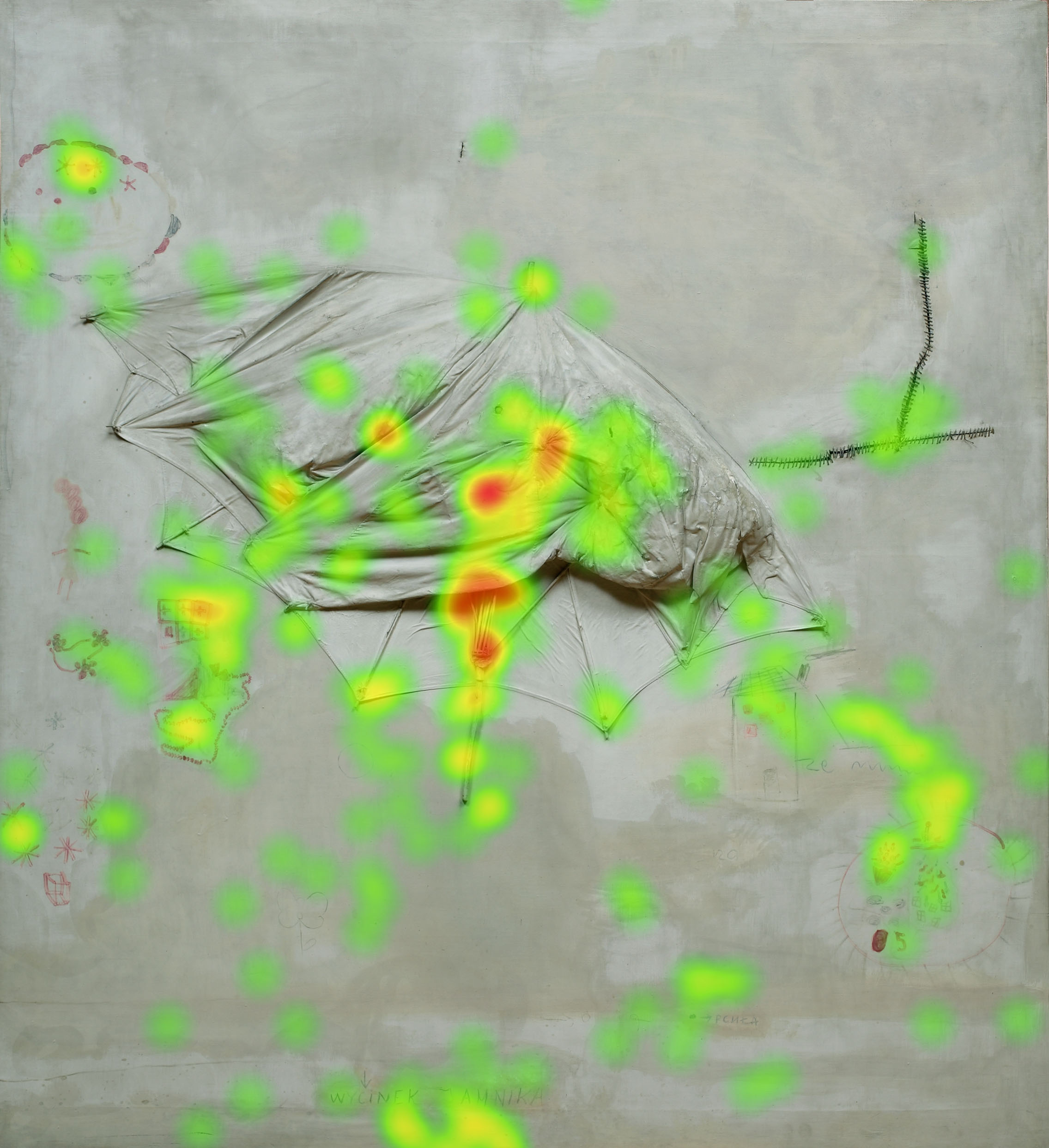
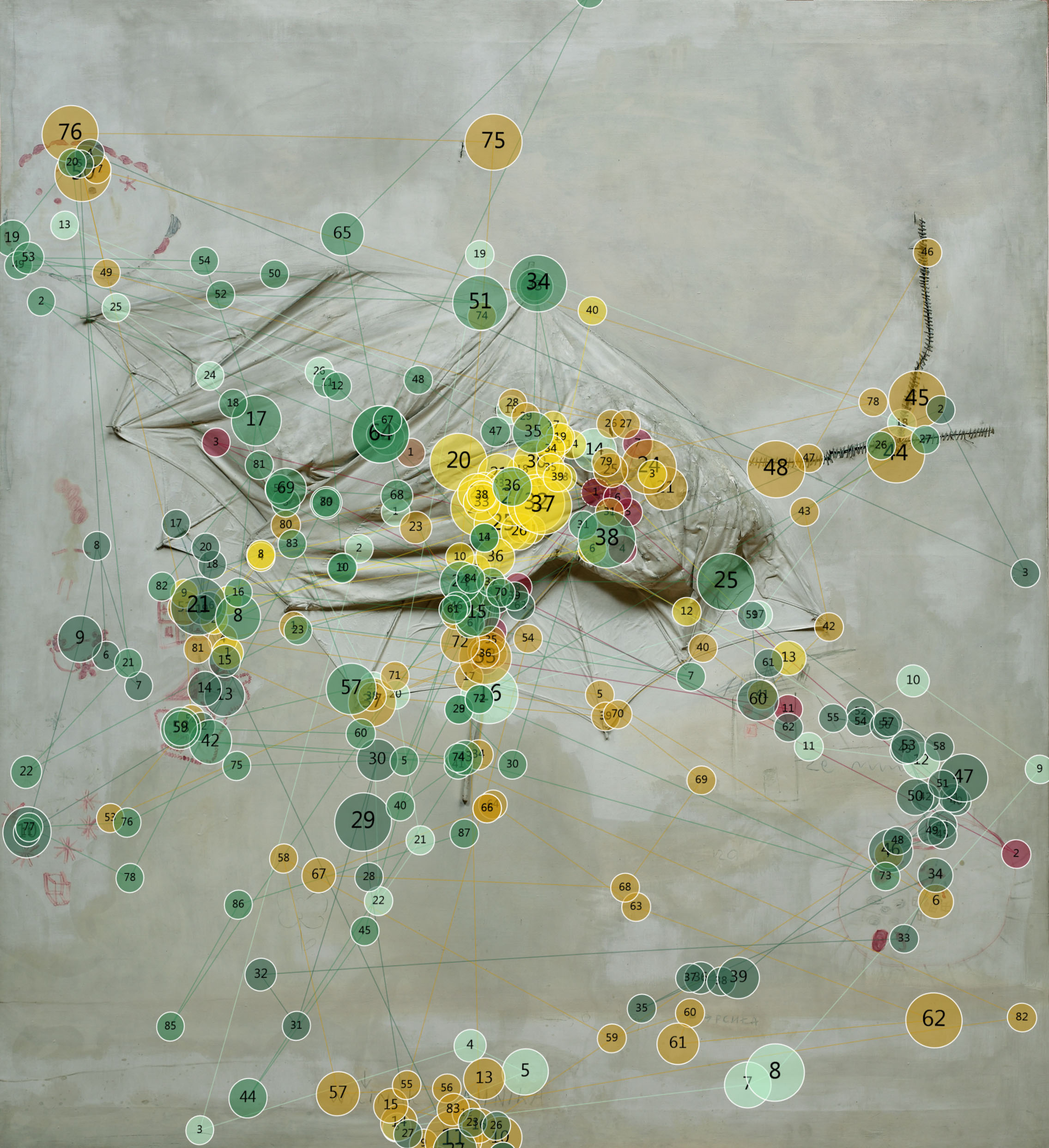
The areas presented above, where the participants looked most frequently, correspond to the compositional axis of the picture. The line organising internal space coincides with the umbrella handle. Pictures of the “Multipart” collection were supposed to make a joke of the art market, yet it soon turned out that their prices went up. Perhaps one of the reasons was their simple and perfectly organised composition.
Each of us looks at the picture in a different way!

Previous
Zdzisław Beksiński “Untitled”
Site map
- How to use the guide
- Andrzej Wróblewski “Shooting I, Execution”
- Stanisław Borysowski “K. B. Graphic”
- Tadeusz Dominik “Composition”
- Zbigniew Makowski “Still Life”
- Anna A. Güntner “High School Graduates”
- Zdzisław Beksiński “Untitled”
- Tadeusz Kantor “Multipart – An Umbrella”
- Tadeusz Brzozowski “Favours”
- Jonasz Stern “The Moment of Light”
- Łukasz Korolkiewicz “Dwellers of Sodom”
- Interviews
PROJECT REALISED AS PART OF THE KUYAVIAN-POMERANIAN VOIVODSHIP MARSHALL SCHOLARSHIP
content & graphic design: Łukasz Kędziora | art collection photographs: Krzysztof Deczyński | translation and proofreading by Martyna Kowalska
